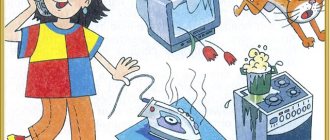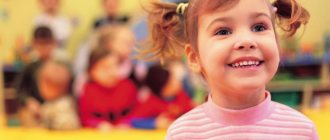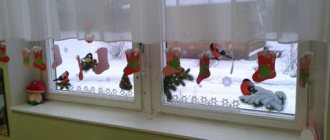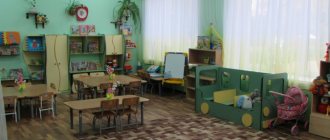Planning classes on Lego construction in the first junior group
GBOU TsRR d/s No. 2312 “Oasis” Compiled by: teacher Zhaafar Z.Zh.
Planning classes on Lego construction in the first junior group
October
1 Week. Topic: “Let’s build a red path”
Program content: - teach children to independently select the necessary parts by size and color; - shape the perception of color; - help children examine objects, highlighting their color; - learn to name an object by its shape (cube); - develop imagination, memory, imaginative thinking; — teach children to name the properties of an object (red carpet); - develop fine motor skills of the hands; - cultivate a desire to work.
Week 2. Topic: “Let's build a green path”
Program content: see 1 week (replace red with green).
Week 3. Topic: “Let’s build and compare the green and red carpets”
Program content: - continue to introduce children to the details (cube); — teach children to independently select the necessary parts according to shape and color; - teach children to name the properties of objects; - develop visual-figurative thinking; — develop the ability to use existing experience; - develop the ability to act on ideas; - develop fine motor skills of the hands; - cultivate a desire to work.
Week 4. Topic: “Red long train and red short train”
Program content: - teach children to name the properties of objects; - exercise in establishing similarities and differences between objects that have the same name (red long train and red short train); - help children examine objects and buildings, highlighting their color, size, shape; — learn to name the size of the train (long-short); - develop imagination, memory, imaginative thinking; - develop fine motor skills of the hands; - cultivate a desire to work.
Week 4. Topic: “The train is green long and red short”
Program content: see week 4. - exercise in establishing similarities and differences between objects that have the same name (long green train - short red train); - fix red and green colors.
November
1 week.
Topic: “Building towers. Red and Green" Program content: - develop fine motor skills of the hands; - cultivate a desire to work; - shape the perception of color; - consolidate knowledge about the colors red and green; - develop imagination, memory, imaginative thinking; — teach children to independently select the necessary parts according to color and shape.
Week 2. Topic: “Building a yellow tower”
Program content: - develop fine motor skills of the hands; - cultivate a desire to work; - learn to name the properties of an object (yellow turret); - develop imagination, memory, imaginative thinking; — teach children to independently select the necessary parts by color (yellow), shape (cube); — develop the ability to use existing experience (building a tower).
Week 3. Topic: “Tall yellow and low yellow turret”
Program content: - develop fine motor skills of the hands; - cultivate a desire to work; - learn to name the size of the turret (high - low); - develop imagination, memory, imaginative thinking; — teach children to independently select parts according to color and shape; — teach children to name the properties of objects (color – yellow).
Week 4. Topic: “Tall yellow and low red turret”
Program content: - exercise in establishing the similarities and differences between objects that have the same name (high yellow turret - low red turret); - fix red, yellow colors; — see 4th week of October.
December
1 Week. Topic: “Let's build a blue tower”
Program content: - cultivate the desire to work; - develop fine motor skills of the hands; - help children remember the color blue; - see 2nd week of November (replace yellow with blue).
Week 2. Topic: “Let’s build a high blue tower and low yellow, red, green towers”
Program content: - cultivate the desire to work; - develop fine motor skills of the hands; - help children examine objects, highlighting their color and size; - attract children's attention to objects of contrasting sizes and their designation in speech (high tower - low tower); — develop visual-figurative thinking, the ability to use existing experience; - develop imagination, memory; - consolidate knowledge about flowers.
Week 3. Topic: “Let’s build paths: narrow blue and wide blue”
Programmatic content: - teach children to name the properties of objects (blue color); - distinguish the size and shape of objects (narrow - wide); - see 3rd week of November.
Week 4. Topic: “Paths: narrow blue and wide green.”
Program content: - exercise in establishing similarities and differences between objects that have the same name; - fix blue, green colors; - develop fine motor skills of the hands; - cultivate a desire to work; - develop memory, imagination, imaginative thinking; — teach children to independently select the necessary parts according to color and shape.
January
1 Week. Topic: “Hide the birds on towers of different colors.” Fixing the color.
Program content: - develop imagination, memory, imaginative thinking; - cultivate a desire to work; - develop fine motor skills of the hands; — teach children to independently select the necessary parts by color and shape; — develop the ability to use existing experience; - continue to learn to name the properties of objects (color, size, shape); - fix the four primary colors.
Week 2. Topic: “Let’s build narrow and wide garages for cars”
Program content: - see 1 week of January; - consolidate the concepts of “narrow – wide”.
Week 3. Topic: “The train is long and short.” Consolidation.
Program content: - see 4th week of October; - consolidate the concepts of “long - short”; - reinforce the four primary colors with the children.
Week 4. Topic: “Crib for Katya doll”
Programmatic content: - cultivate the desire to work; - develop fine motor skills of the hands; - practice naming colors for children; - develop imagination, memory, imaginative thinking; — cultivate a desire to build and play out a composition; - distinguish the size and shape of objects.
February
1 Week. Theme: "Dinner table"
Program content: - cultivate the desire to work; - develop fine motor skills of the hands; - practice naming colors for children; - develop imagination, memory, imaginative thinking; — cultivate a desire to build and play out a composition; - distinguish the size and shape of objects.
Week 2. Topic: “Chairs for guests”
Program content: - see 1 week of February.
Week 3. Topic: “Fence for a house made of blue cubes”
Program content: - see 1 week of February; - consolidate knowledge about size, height, color, properties (high - low).
March
1 Week. Topic: “Machine for bunnies”
Program content: - develop fine motor skills of the hands;
- cultivate a desire to work; - promote the development of creative imagination; — cultivate a desire to build and play out a composition; - develop memory, imaginative thinking; — teach children to name the properties of objects. Week 2.
Topic: “Sand truck” Program content: - cultivate the desire to work; - develop fine motor skills of the hands; - develop memory, imagination, fine motor skills; - develop memory, imagination, imaginative thinking; — cultivate a desire to build and play out a composition; - learn to name the properties of objects; — develop mental processes: visual and auditory attention.
Week 3. Topic: “Bench for guests”
Program content: - see 2nd week of March.
Week 4.
Topic: “Low bench and high bench” Program content: - see 2nd week of March; - learn to name the size (high - low); — teach children to independently select parts according to size; - develop the ability to use existing experience.
April
1 Week. Topic: “Car gates”
Program content: - cultivate the desire to work; - develop fine motor skills of the hands; — develop the ability to use existing experience; — see 2nd week of March; - continue to teach children how to build a strong structure with floors in a certain sequence, using previously learned skills.
Week 2. Topic: “Fence with gate”
Program content: - cultivate the desire to work; - develop fine motor skills of the hands; - develop memory, imagination, imaginative thinking; — cultivate a desire to build and play out a composition; — develop the ability to use existing experience; - learn to name the properties of objects.
Week 3. Topic: “Ladder made of cubes of the same color”
Program content: - learn to build a ladder from six cubes of the same color;
- develop memory and imagination; — develop the ability to use existing experience; - develop fine motor skills of the hands; - cultivate a desire to work; - fix the colors. Week 4.
Topic: “Wide staircase made of bricks of the same color” Program content: - develop memory, imagination, imaginative thinking;
- develop fine motor skills of the hands; - cultivate a desire to work; — teach children to independently select parts according to size (size); - learn to distinguish objects by shape and name them (cube, brick); - teach children to name the properties of objects; - reinforce the primary colors with the children. Week 5.
Topic: “Let’s build a ladder for a turret of the same color as the turret” Program content: - reinforce the primary colors with the children; - develop fine motor skills of the hands; — develop the ability to use existing experience; - cultivate a desire to work; — teach children to name the properties of objects.
May
1 Week. Topic: “Building a wide green road for red cars”
Program content: - develop fine motor skills of the hands; - cultivate a desire to work; — develop the ability to use existing experience; - encourage the creation of new versions of already familiar buildings; - promote the development of creative imagination; - fix colors: green, red.
Week 2. Topic: “Let’s fence off the yellow house with a blue fence”
Program content: - cultivate the desire to work;
— develop the ability to use existing experience; - develop fine motor skills of the hands; - encourage the creation of new versions of already familiar buildings; — fix colors: yellow, blue; - develop imagination, imaginative thinking, memory. Week 3.
Topic: “House” Program content: - teach children to build a house from four cubes placed vertically and a ceiling from two bricks; - fix primary colors; - develop imaginative thinking, imagination, memory; - develop fine motor skills of the hands; - cultivate a desire to work.
Week 4. Topic: “House with a window”
Program content: - learn to build a house with a window from four cubes and two bricks; - fix primary colors; - develop fine motor skills of the hands; - cultivate a desire to work; - develop imaginative thinking, imagination, memory; - encourage the creation of new versions of already familiar buildings.
"LEGO Country"
LEGO construction sets have a lot of different parts, and for ease of use with children, the names of the parts are worked out. LEGO bricks come in different sizes and shapes. The names of parts and the ability to identify a cube (brick) of a certain size are reinforced with children over several lessons until the children have fixed these names in their active dictionary.
During classes, the teacher invites children to watch presentations, videos with stories on the topic, which show the moments of assembling the structure, or present intellectual tasks.
When planning joint activities, the teacher gives preference to various game forms and techniques in order to avoid monotony. Learning to build a model step by step allows them to move forward at their own pace and stimulates the desire to learn and solve new, more complex problems. The topics of the lessons are selected in such a way that, in addition to solving specific design problems, the child expands his horizons: fairy tales, architecture, animals, birds, transport, space, etc.
In a collaborative LEGO building activity, the teacher encourages children to identify what an object is like and how it differs from others; teaches to master the ability to measure the width, length, height of objects; solve design problems “by eye”; develop imaginative thinking; imagine objects in different spatial positions. During classes, the teacher works on the development of imagination, fine motor skills (manual dexterity), creative inclinations, the development of dialogic and monologue speech, and the expansion of vocabulary. He pays special attention to the development of logical and spatial thinking, teaches how to work with the proposed instructions, diagrams, and construct a building according to a plan, given conditions, and a model. The teacher begins working with children with the simplest buildings, teaches how to correctly connect parts, examine a sample, “read” a diagram, and first correlate it with a specific example of a building. When creating structures, the teacher teaches children to analyze a sample or construction diagram, find the main parts in the building, name and show the parts from which these parts of the object are built, and determine the order of construction actions. The teacher invites each child participating in the work to complete the task to express his attitude towards the work done, about the progress of the task, about the purpose of the structure.
After completing each individual stage of work, the teacher, together with the children, checks with the children whether the parts are connected correctly and teaches them to compare with a sample or diagram. Depending on the topic, goals and objectives of a particular lesson, the proposed tasks can be completed individually or in pairs. The combination of various forms of work contributes to the acquisition by children of social knowledge about interpersonal interaction in a group, in a team, learning, exchange of knowledge, skills and abilities takes place.
PEDAGOGICAL PROJECT FOR CHILDREN OF YOUNGER PRESCHOOL AGE (3-4 years old) “LEGO STEM - KIDS”
author: Balueva Lyudmila Nikolaevna
teacher Municipal Autonomous Preschool Educational Institution "Child Development Center "Dobryansky Kindergarten No. 15"
PEDAGOGICAL PROJECT FOR CHILDREN OF YOUNGER PRESCHOOL AGE (3-4 years old) “LEGO STEM - KIDS”
PEDAGOGICAL PROJECT FOR CHILDREN OF JUNIOR PRESCHOOL AGE (3-4 years)
» LEGO STEM – BABIES «
Educator: Balueva Lyudmila Nikolaevna
Relevance
Preschool education is the age period of formation of figurative forms of consciousness. One of these learning tools currently is LEGO constructors.
LEGO construction is one of the most modern areas of children’s development, widely using three-dimensional models of the real world and an object-based play environment for the child’s learning and development. LEGO allows children to learn through play and learn through play. The most important thing is to provide children with the opportunity to “experience” material that is interesting to them. By learning new things, children learn to express their attitude to what is happening. By constructing, they immerse themselves in a situation organized by adults. During educational activities, children become builders, architects and creators; while playing, they come up with and implement their ideas. In the process of activity, a variety of tasks are solved: psychological, cognitive activity develops. While traveling, children help their friends, rescue heroes from trouble, and learn interesting facts. In preparation for the trip, children construct, learn poems, and work with diagrams. At the same time, children develop creative imagination, communication skills, and curiosity. The main thing is that there are no spectators, there are only participants, and everyone participates with great desire. The knowledge children receive is relevant and necessary for them. And meaningful, interesting material is absorbed easily and forever.
Target:
development of initial skills in engineering, imagination, fine motor skills of children of primary preschool age in the process of playing with LEGO and testing of the partial modular program “STEM - education”, module - “LEGO - design”
Tasks:
— creating favorable conditions for the development of initial LEGO construction skills in preschool children;
— develop constructive thinking;
- develop children's imagination and curiosity;
- develop the ability to work with parts and convey the features of objects using LEGO constructors;
- develop fine motor skills of the fingers.
Starting with simple figures, the child moves further and further, and, seeing his successes, he becomes more self-confident and moves on to the next, more complex stage of learning.
Children playing with LEGO:
1. Develop fine motor skills of the hands, stimulating general speech development and mental abilities in the future.
2.Learn to navigate space correctly and quickly.
3. Expand their ideas about the world around them - about architecture, transport, landscape.
4.Develop attention, ability to concentrate, memory, thinking.
5.Learn to imagine, fantasize, and think creatively.
- They master the ability to mentally divide an object into its component parts and assemble a whole from the parts.
- They learn to communicate with each other, organize joint games, and respect their own and other people’s work.
Working with LEGO constructors allows children, in the form of educational play, to learn a lot of important things and develop skills necessary for later life.
There are three main types of design: by model, by conditions and by design.
-Construction from a model - when there is a ready-made model of what needs to be built (for example, an image or diagram of a house).
-When designing according to conditions, there is no sample, only the conditions that the building must meet are set (for example, a house for a dog should be small, and for a horse - large).
-Construction by design assumes that the child himself, without any external restrictions, will create an image of the future structure and embody it in the material that is at his disposal. This type of construction develops the child’s creative abilities better than others.
The interested attitude of parents plays an important role in the implementation of this project. In the modern world, almost every family has a LEGO constructor, but it is not used as a developmental material. To reveal the possibilities of LEGO to parents, during the implementation of the project such forms of work as consultations, open classes for parents, recommendations, etc. will be used.
The project is designed for classes 2 times a month. The duration of continuous direct educational activity for children from 3 to 4 years old is no more than 15 minutes.
Project participants:
- Group teachers
- Preschool children
- Parents
Organization and content of design training
First half of the year:
- learn to name the parts of a LEGO construction set (brick, big, smaller, small, beak, slide, bridge, etc.);
- teach the simplest analysis of constructed buildings (identify the shape, size, color of details);
— carry out the simplest design in accordance with given conditions (car gates);
- compare objects by length and width;
- enrich speech with phrases (the red path is long (wide));
- design according to the sample and conditions;
- distinguish by color and shape;
— develop hand-eye coordination when connecting construction parts, achieve precision in the process of operational actions.
Second semester:
— introduce new LEGO construction parts (car base, semicircle, oval);
- learn to reproduce a familiar object in a building, find its constructive solution;
- formalize your plan by preliminary naming the future building;
- develop and support the plan in the process of developing constructive activities, help to implement it;
— to develop the ability to use acquired knowledge in independent buildings according to plan.
Expected results:
- They are able to distinguish and name LEGO parts.
- They have the skills of simple analysis of constructed buildings (shape, size, color of parts).
- They have design skills: according to a model, according to conditions, according to the simplest visual diagrams.
- They have an idea of sensory standards (color, shape, size).
- Their spatial characteristics are distinguished in objects: “high - low”, “wide - narrow”, “long - short”.
- Know a variety of ways to fasten parts.
- They have the skills to concentrate attention and coordinate movements when connecting construction parts.
- They are able to reproduce a familiar object in a building, to formalize their plan by first naming the future building.
- They are able to develop and maintain a plan in the process of unfolding constructive activities.
- They are able to identify the object shown on the diagram and name its functions.
- They have design skills: according to a sample, according to conditions, according to design, according to drawings and visual diagrams.
Forms of work with parents:
- Workshop for parents “Let's play together!”
- Consultations:
- “How to play with your child at home using different types of construction”
- "Magic" bricks
- “Development of children’s cognitive and creative abilities in the process of constructive activity”
- "LEGO DUPLO educational toys"
- “LEGO construction as a means of developing spatial thinking in preschool children in preschool settings”
- Open viewings of GCD for parents.
- Photo exhibitions to present your own design models.
- Exhibitions of the best works of children.
Plan for working with children.
| Month | Subject | Goals |
| November | Introduction to LEGO construction | Introduce the LEGO constructor (brick, paw, beak). Reinforce knowledge of color and shape. |
| Pyramid | Learn to build simple buildings. Develop a caring attitude towards the designer. | |
| December | Bridge | Learn to build simple buildings. Develop a caring attitude towards the designer. |
| We will build a house in the forest | Develop creative imagination. Learn to imitate the sounds and movements of characters (bear, fox, hare). Learn to build a house from a LEGO constructor. | |
| January | Furniture for the room | Develop the ability to identify functional parts in objects. Learn to analyze a sample. |
| Design by Design | Reinforce acquired skills. Learn to think about the content of a future building in advance, name its theme, and give a general description. Develop creative initiative and independence. | |
| February | Bridge over the river | Learn to build a bridge and accurately connect building parts. |
| Truck | Learn how to create a simple model of a truck. Highlight the main parts and details. | |
| March | Car with trailer | Learn to build a car with a trailer. Develop design skills. |
| Fire engine | Introduce the profession of a firefighter. Learn to build a fire truck. | |
| April | Rocket | Talk about space. Learn to build a rocket. |
| Design by Design | Reinforce acquired skills. Learn to think about the content of a future building in advance, name its theme, and give a general description. Develop creative initiative and independence. | |
| May | Playground | Show the children's playground. Build a sandbox and stairs. |
| Slide for the kids | Continue to introduce the children's playground. Develop memory and observation skills. | |
| Design by Design | Reinforce acquired skills. Learn to think about the content of a future building in advance, name its theme, and give a general description. Develop creative initiative and independence. | |
| As a result, the child may: | ||
| know |
| |
| be able to |
| |
| have an idea |
| |



